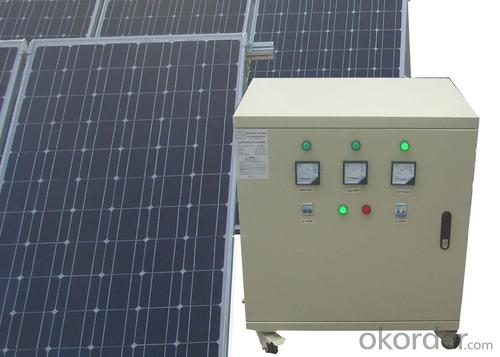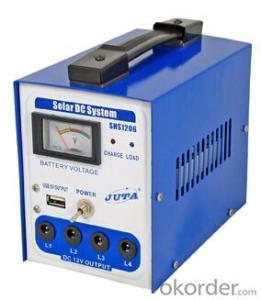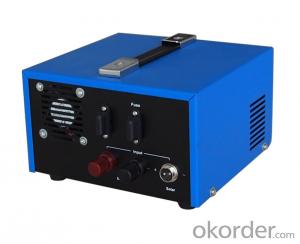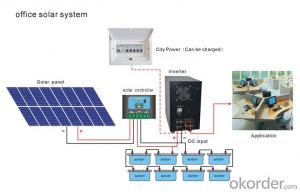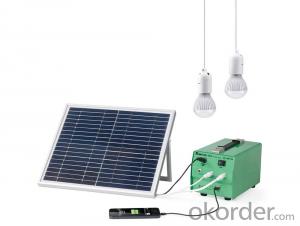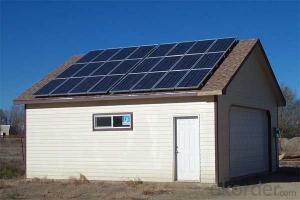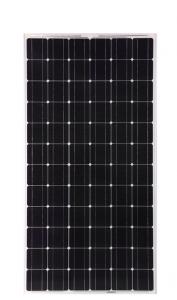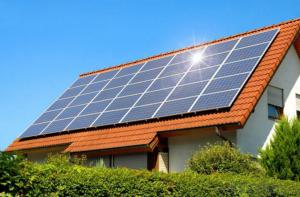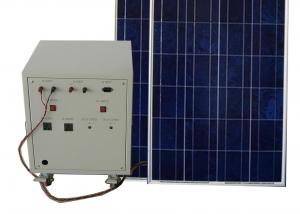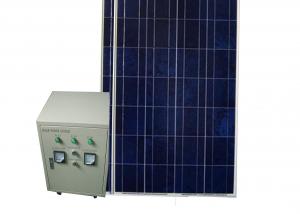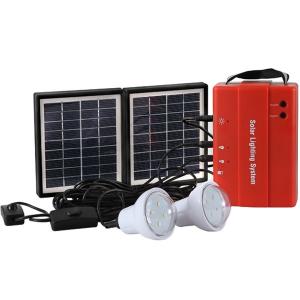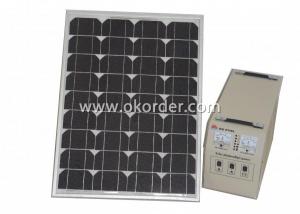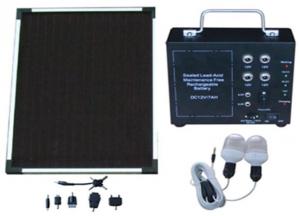CNBM Solar Energy Systems Austin TX - CNBM-K7 (3kW)
- Loading Port:
- China Main Port
- Payment Terms:
- TT or L/C
- Min Order Qty:
- 1 set set
- Supply Capability:
- 1000 sets per month set/month
OKorder Service Pledge
OKorder Financial Service
You Might Also Like
Brief Introduction of Solar Energy System CNBM-K7 (3KW)
CNBM Home System-K7 (3KW) has a wonderful capacity.It can be used in factory,home,school and other CNBM Home System-K7 (3KW) consist of the solar modules,charge controller,inverter and battery banks.
CNBM International is highly recognized by its business partners and clients all over the world and has obtained rapid development under the spirit of win-win .
With CNBM Home System-K7 (3KW),
We will carry on the mutual beneficial,innovative and revolutionary trading structure as we did before,create value for our employees,share holders and clients and benefit the whole society in our future development.Please contact us ,if you have interest in CNBM Home System-K7 (3KW),don’t hesitate!
The Sketching of Solar Energy System CNBM-K7 (3KW)
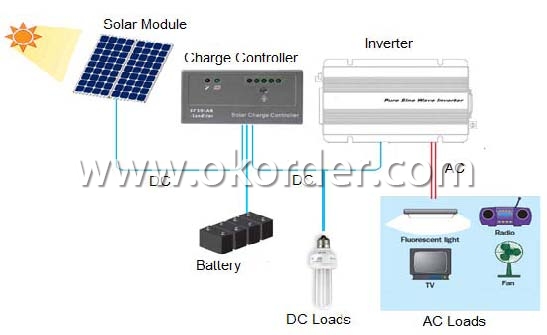
Components of Solar Energy System CNBM-K7 (3KW)
PV Array:
Convert sunlight instantly into DC electric power. Formed by the solar modules (also called photovoltaic modules) in accordance with the system requirements for series and parallel.
Solar Charge Controller:
A charge controller may be used to power DC equipment with solar panels. The charge controller provides a regulated DC output and stores excess energy in a battery as well as monitoring the battery voltage to prevent over charge or over discharge. An inverter can be connected to the output of a charge controller to drive AC loads.
Inverter:
Converts DC output power of photovaltaic soalr panels into standard AC power for use in the local off-grid electrical network. It is a critical component in a photovoltaic system, allowing the use of ordinary commercial appliances.
Battery banks:
Stores energy when there is an excess coming in and distribute it back out when there is a demand. Solar PV panels continue to re-charge batteries each day to maintain battery charge.
Technical data of Solar Home System CNBM-K7 (3KW) | ||
Inverter | Rated load power | 3000W |
Output wave | Pure sine wave | |
Output voltage | DC 48V | |
Output frequency |
AC:220V | |
Precision of output | 50HZ/60HZ | |
Precision of output frequency | ±6% | |
Solar panel | Pmax | 245W*12PCS |
Vmp | 31.1V*2 | |
Imp | 7.89A*6 | |
Charger | Charger voltage & current | 48V /30A*3PCS |
Battery | Capacity | 12V 135AH*4*3PCS |
Support | Aluminum | 2PCS/SET*6 |
Power box | Spray paint iron box,with input,output,ammeter,voltmeter,master swith and so on. | |
Package of Solar Home System CNBM-K7 (3KW) | ||||
Part | Size(L*W*H mm) | Weight(kg) | 20’(pcs) | 40’(pcs) |
Power box | 800*540*780 | 70 | 20 Sets | 26 Sets |
Solar panel | 1655*992*40 | 280 | ||
Battery | 1100*520*650 | 600 | ||
Factory Picture of Solar Energy System CNBM-K7 (3KW)
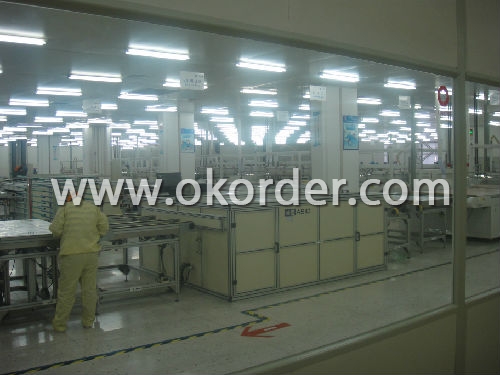
Package Picture of Solar Energy System CNBM-K7 (3KW)

- Q: Are there any noise concerns associated with solar energy systems?
- While solar energy systems are generally quiet, there are potential noise concerns associated with certain components of the system. The most common source of noise in solar energy systems is the inverter, which converts the direct current (DC) electricity generated by the solar panels into alternating current (AC) electricity that can be used in homes or businesses. Inverters can emit a low humming noise, similar to that of a refrigerator or air conditioning unit, but the noise level is typically very low and not considered disruptive. However, advancements in technology have led to the development of quieter inverters that produce minimal noise. Some inverters are designed with noise reduction features such as soundproof enclosures or fans with low noise levels. Additionally, the location of the inverter can play a role in minimizing noise concerns. Placing the inverter in a well-insulated area, away from living spaces, can further reduce any potential noise disturbances. It's worth noting that other components of a solar energy system, such as the mounting structures or wiring, do not produce any significant noise. Solar panels themselves do not generate noise as they rely on sunlight to generate electricity rather than any moving parts. Overall, while there may be some noise concerns associated with certain components of solar energy systems, advancements in technology and proper installation practices have significantly minimized any potential disruptions.
- Q: What are the devices needed for PV systems?
- Battery pack. The utility model is used for storing the electric energy generated by the solar array when illuminated by the light and can supply power to the load at any time. In the grid connected solar power generation system, the battery can not be added
- Q: What is the impact of dust storms on solar panels?
- Solar panels can be significantly affected by dust storms. The build-up of dust and debris on the panel surface can block sunlight, resulting in reduced efficiency and electricity generation. Dust particles act as a barrier, preventing sunlight from converting into electricity, leading to decreased power output and overall performance. Moreover, physical damage can also occur during dust storms. The panel surfaces can be scratched or chipped by abrasive particles carried by strong winds, causing long-term degradation and reduced efficiency. Additionally, the accumulation of dust and debris can raise the panel temperature, further decreasing efficiency. To mitigate the impact of dust storms, regular cleaning and maintenance are crucial. Periodic cleaning removes dust and debris, helping to maintain efficiency and maximize electricity generation. Furthermore, installing tilt systems or self-cleaning technologies can effectively prevent or shed off dust accumulation, minimizing the impact of dust storms. In conclusion, dust storms can negatively affect solar panels, reducing efficiency and potentially causing physical damage. However, proper maintenance and cleaning practices can minimize these effects, allowing solar panels to continue generating clean and sustainable energy.
- Q: Can solar energy systems be used for off-grid living?
- Yes, solar energy systems can definitely be used for off-grid living. Off-grid living refers to living in a location that is not connected to the main electrical grid. Solar energy systems are an excellent solution for off-grid living as they can generate electricity from the sun's energy, providing a reliable and sustainable power source. By installing solar panels and a battery storage system, off-grid homes can meet their energy needs even in remote areas without access to conventional electricity.
- Q: How do solar energy systems affect wildlife and ecosystems?
- Solar energy systems have minimal negative impacts on wildlife and ecosystems compared to other energy sources. While the construction and operation of these systems may disrupt habitats temporarily, they do not emit greenhouse gases or harmful pollutants. Proper planning and implementation can mitigate potential risks, ensuring that solar energy remains a sustainable and environmentally friendly choice.
- Q: Can a solar energy system be used for heating and cooling?
- Yes, a solar energy system can be used for heating and cooling. Solar thermal systems can be used to provide heat by capturing and utilizing the sun's heat energy. These systems typically consist of solar collectors that absorb the sun's rays to heat a fluid, which is then used to heat water or air. The heated water can be used for various purposes, such as space heating, domestic hot water, or even for industrial processes. Additionally, solar energy can also be used for cooling through the use of solar-powered air conditioning systems. These systems utilize solar energy to power absorption chillers or heat-driven chillers, which cool the air by absorbing heat from it. This process is typically more energy-efficient than traditional air conditioning systems that rely on electricity. Furthermore, solar energy can also be harnessed for passive cooling. Passive solar cooling techniques involve designing buildings to maximize natural ventilation and shading, reducing the need for mechanical cooling systems. This can be achieved through techniques such as strategic building orientation, proper insulation, and the use of shading devices like awnings or overhangs. Overall, solar energy systems can indeed be used for both heating and cooling, offering sustainable and cost-effective solutions for meeting our thermal comfort needs.
- Q: Can solar energy systems be used in areas prone to earthquakes?
- Yes, solar energy systems can be used in areas prone to earthquakes. While earthquakes can pose a risk to any infrastructure, including solar panels, proper design and installation can mitigate potential damage. Reinforced mounting structures and flexible connectors can help absorb vibrations and prevent panels from dislodging. Additionally, solar energy systems are decentralized, meaning that even if some panels are affected by an earthquake, the rest of the system can continue to operate. Overall, with careful planning and engineering, solar energy systems can be used effectively in earthquake-prone areas.
- Q: Can a solar energy system be installed on a historic building?
- Installing a solar energy system on a historic building is indeed possible, but it necessitates careful consideration and planning to avoid compromising the building's integrity or aesthetic appeal. Preservation laws and regulations often safeguard historic buildings, which can impose limitations on visible modifications. In such instances, solar panels can be strategically placed on the less conspicuous sides or at the rear of the building, or even incorporated into existing structures like roofs or awnings to minimize their visual impact. Collaboration with preservation experts and architects is essential in designing the solar system to ensure it harmonizes with the building's historic character. By undertaking proper planning and execution, a solar energy system can successfully blend into a historic building, simultaneously reducing its carbon footprint and preserving its architectural charm.
- Q: How does the efficiency of solar panels vary between manufacturers?
- The efficiency of solar panels can differ significantly among manufacturers as a result of various factors. One primary factor is the quality of materials used during production. Panels made with high-quality materials, like monocrystalline silicon, generally exhibit higher efficiency compared to those made with lower-quality materials. Manufacturers also employ diverse manufacturing processes that can impact panel efficiency. For instance, some manufacturers utilize more advanced and precise techniques, resulting in higher efficiency panels. Moreover, the level of experience and expertise of the manufacturer can also influence panel efficiency. Furthermore, panel efficiency can be influenced by the design and engineering of the panels. Manufacturers who invest more in research and development to optimize panel design often achieve higher efficiency. Factors such as the arrangement and quantity of solar cells, electrical connections, and anti-reflective coatings all contribute to overall panel efficiency. Additionally, the size and surface area of solar panels can affect their efficiency. Larger panels generally possess more solar cells and a larger surface area to capture sunlight, leading to higher efficiency. However, this may also result in increased costs and space requirements. Lastly, the efficiency of solar panels can be impacted by the testing and certification processes. Manufacturers that conduct rigorous testing and obtain certifications from recognized authorities tend to produce more reliable and efficient panels. To conclude, the efficiency of solar panels can vary among manufacturers due to factors such as material quality, manufacturing processes, design and engineering, size and surface area, and testing and certification. Consumers should consider these factors when selecting solar panels to ensure they choose the most efficient and reliable option for their specific needs.
- Q: What is the payback period for a solar energy system?
- The payback period for a solar energy system can vary depending on factors such as the cost of the system, the amount of energy it generates, and the local electricity rates. On average, however, it typically ranges between 5 to 10 years.
Send your message to us
CNBM Solar Energy Systems Austin TX - CNBM-K7 (3kW)
- Loading Port:
- China Main Port
- Payment Terms:
- TT or L/C
- Min Order Qty:
- 1 set set
- Supply Capability:
- 1000 sets per month set/month
OKorder Service Pledge
OKorder Financial Service
Similar products
Hot products
Hot Searches
Related keywords



